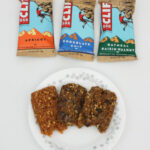Soap making hobbyists often experiment with different soap making oils and ingredients in order to discover what makes for the best soap bars possible. Different soap making oils have different properties that affect the outcome of a bar of soap.
For example, some oils contribute to a harder bar, more lather, or more bubbles. Other soap making oils influence the creaminess of a bar of soap or give the soap extra moisturizing properties. This article will examine the different soap making oils and what they can contribute to a bar of soap.
A thorough knowledge of soap making ingredients and their properties will ensure a more fulfilling soap making experience with plenty of enjoyment and experimentation.
Generally, soap making oils can be used at two different times in the soap making process: before trace, and after trace.
When added before soap traces, oils are considered base oils because they are converted by lye to become soap.
When added after trace, oils are considered superfatting agents, since they remain in the soap unconverted by the lye.
Some soap making oils are best as base oils, used in larger quantities in the soap, while other oils are best added in small quantities prior to the trace stage.
The most commonly used base oils in vegetable-based soaps are olive oil, coconut oil, palm oil, and castor oil.
Olive oil softens skin and attracts moisture. Soaps with a large quantity of olive oil are generally very mild and acceptable for people with sensitive skin.
Olive oil can be used practically in any quantity. A bar of soap made with olive oil as its primary ingredient (making up up to 100 percent of the base oils) is called Castile. Castile is generally more “slimy” than other soaps, with little lather. Some people like it, some people don’t. It’s simply a matter of preference.
Using coconut oil for soap making adds lathering properties to soap. Soap bars with substantial coconut oil will even lather in hard water. Coconut oil should not be used as more than 25 percent of a soap recipe, however, since it can be drying to the skin in larger quantities.
Palm oil adds hardness to soap. It is also a mild oil. Palm oil can be used in quantities up to 30 percent in soap recipes.
Castor oil is great for adding bubbles to soap. It also adds hardness and attracts moisture to the skin. Generally it should not be used in quantities larger than 15 percent.
Smaller quantities of the above mentioned oils can also be added after trace for added benefits. Other beneficial additives best added after trace include: cocoa butter, avocado oil, jojoba oil, and shea butter.
Cocoa butter is a great skin softener. When used for superfatting, shea butter creates a layer that locks in moisture to the skin. It can be used in small quantities at trace or as much as one pound, depending on preference.
Avocado oil is another soap making oil great for superfatting. Avocado oil is very mild and therefore good for sensitive skin. It also contains many beneficial vitamins and nutrients for natural healing properties.
Jojoba oil has properties that stabilize lather in soap. Jojoba oil is also a great moisturizer and conditioner. It is a bit expensive, but with this oil, a little goes a long way. It should be added after trace at about one to two ounces per pound.
Shea butter is another good superfatting oil. It evens skin tone and protects skin. It also contains many beneficial vitamins for added health benefits.
These soap making oils are only the beginning of a long list of natural oils that benefit the skin and make desirable bars of soap. Soap makers should experiment with these oils and learn how to adapt them to their own recipes, so they can make soap bars with a mark of their very own charm and personality.
Reference:
- Gourmet Soaps Made Easy by Melinda Coss Soapmaker’s Companion: A Comprehensive Guide with Recipes, Techniques & Know-How by Susan Miller Cavitch





